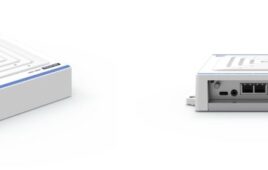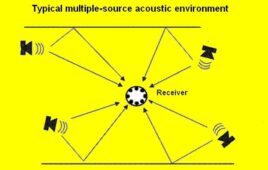Traditionally, small chip antennas used in RF-enabled medical devices have required a designated ground “keep out” area to minimize interference from other components and ensure the ideal radiation pattern for wireless signals. In some cases, this reserved space can eat up as much as 15 x 20 mm of the printed circuit board.

However, with the drive to further miniaturize next generation medical biosensors and wearables, new alternatives are entering the market that allow the chip antenna to be mounted directly above metal surfaces. By doing so, as much as 10-20% of the space traditionally reserved for the keep out area is no longer required. The chip antenna is suitable for an array of “smart” devices such as watches, clothing, eye glasses, patches, pills and even adhesive bandages.
To work properly, chip antennas have typically been ground plane dependent, meaning they require an appropriately sized and positioned ground plane to form a complete, resonant circuit.
While the PCB can serve as the ground plane, the antenna itself must typically be placed on the edge of the board in an isolated section that is free from ground and metal components that would distort its radiation. Without the isolation distance, the performance of the antenna is affected.
“The ‘keep out area’ is fundamental to ensure the chip antenna can electromagnetically radiate to antenna applications, because everything affects the radiation pattern including the package size, where the antenna is mounted and its proximity to the human body,” says Manuel Carmona of Johanson Technology, a leader in high frequency ceramic components including chip antennas, High Q capacitors and EMI chip filters.
According to Carmona, Johanson Technology has been able to eliminate the requirement for a designated ground keep out area through optimization of materials (ceramics and inks), manufacturing processes and RF circuit design.
The 2.4 GHz antenna can be mounted directly onto the metal ground plane. The product measures 2 x 5mm and is designed for small coin-cell battery operated IoT, 2.4 BLE, wearable, ISM, ZigBee, and 802.11-standard applications where metal or a battery/display covers the entire length or side of the PCB.
The design of the antenna is also critical to range and performance. For example, with medical devices, radio interference could result in interrupted connectivity.
There can be legal ramifications as well. As with any wireless device, products that use RF technology, including Bluetooth, to collect or transmit information are subject to regulation by the Federal Communications Commission (FCC).
“A chip antenna that can be mounted over a ground plane opens up many applications for products that want to incorporate wireless,” says Carmona. “To date, we have received everything from smart shirt buttons to jewelry and other wearables in various shapes and sizes.”
Johanson Technology
www.johansontechnology.com/ant
Filed Under: Capacitors, CONNECTIVITY • fieldbuses • networks, Medical-device manufacture




